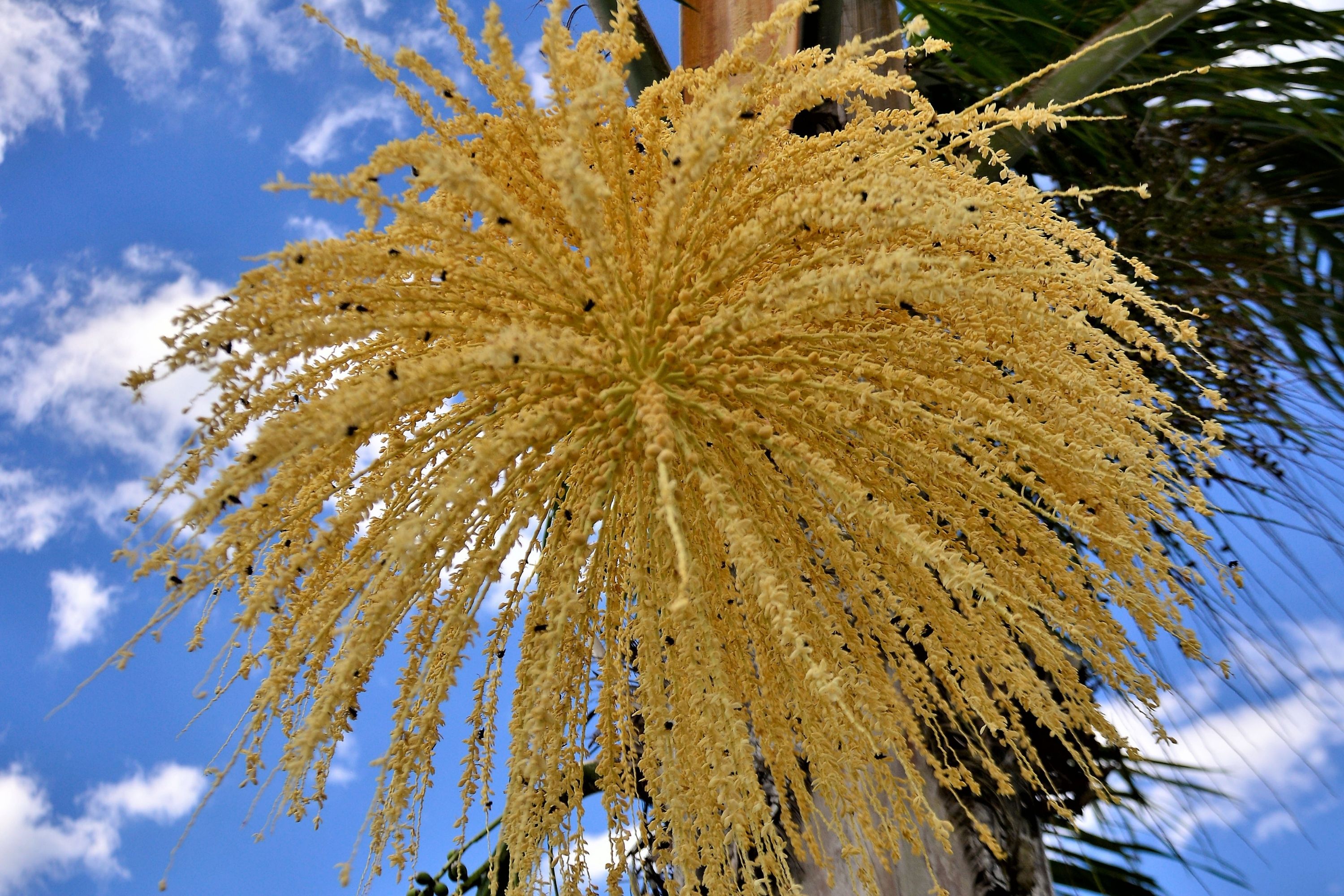Queen palm
(Syagrus romanzoffiana)

Description
Syagrus romanzoffiana, the queen palm or cocos palm, is a palm native to South America, introduced throughout the world as a popular ornamental garden tree. S. romanzoffiana is a medium-sized palm, quickly reaching maturity at a height of up to 15 m (49 ft) tall, with pinnate leaves having as many as 494 pinnae (leaflets), although more typically around 300, each pinna being around 50 centimetres (18 in) in length and 3–5 centimetres (1–2 in) in width. It occurs from eastern and central Paraguay and northern Argentina north to eastern and southern Brazil and northern Uruguay. It is quite common in its native range. In Brazil it occurs in the states of Bahia, Distrito Federal, Goiás, Mato Grosso do Sul, Espírito Santo, Minas Gerais, Rio de Janeiro, São Paulo, Paraná, Rio Grande do Sul and Santa Catarina. In Argentina it occurs in the provinces of Buenos Aires, Chaco, Corrientes, Entre Ríos, Formosa, Mendoza, Misiones (El Dorado, Guaraní, Iguazú), Santa Fe, San Juan and San Luis. In Uruguay it occurs in the departments of Maldonado, Montevideo, Rivera, Rocha, Salto, Tacuarembó and Treinta y Tres. In Paraguay it occurs in the departments of Alto Paraná, Amambay, Caaguazú, Canindeyú, Central, Concepción, Cordillera, Guairá, Ñeembucú, Paraguarí and San Pedro. The queen palm is reportedly naturalized to some extent in Florida, Queensland, Honduras, and the island of Mauritius. On Mauritius seedlings have been recorded from gardens in the now highly residential area 'Montagne Ory' near the village of Moka from 1981-1984 to at least 1999. The government of the Australian state of Queensland considers it a potential 'invasive plant', and discourages home-owners from planting it, but it is not prohibited or restricted, or a declared weed. According to the 1989 Flora of Southeastern Queensland it is naturalised in southern Queensland and the Atherton Tableland. It is not regarded as an invasive or naturalised in New South Wales, although numerous sightings of it have been recorded around Sydney and the coast, including in nature parks. It has been classified as a noxious weed by one local council in New South Wales since at least 2010, as of 2015 it is not prohibited or restricted in the state, but classified as a 'serious threat not widely distributed in the area' in one local region. It was possibly first identified as a potential environmental weed for the area in a book from 1998. Sale is discouraged and the palms are being removed.
Taxonomic tree:







